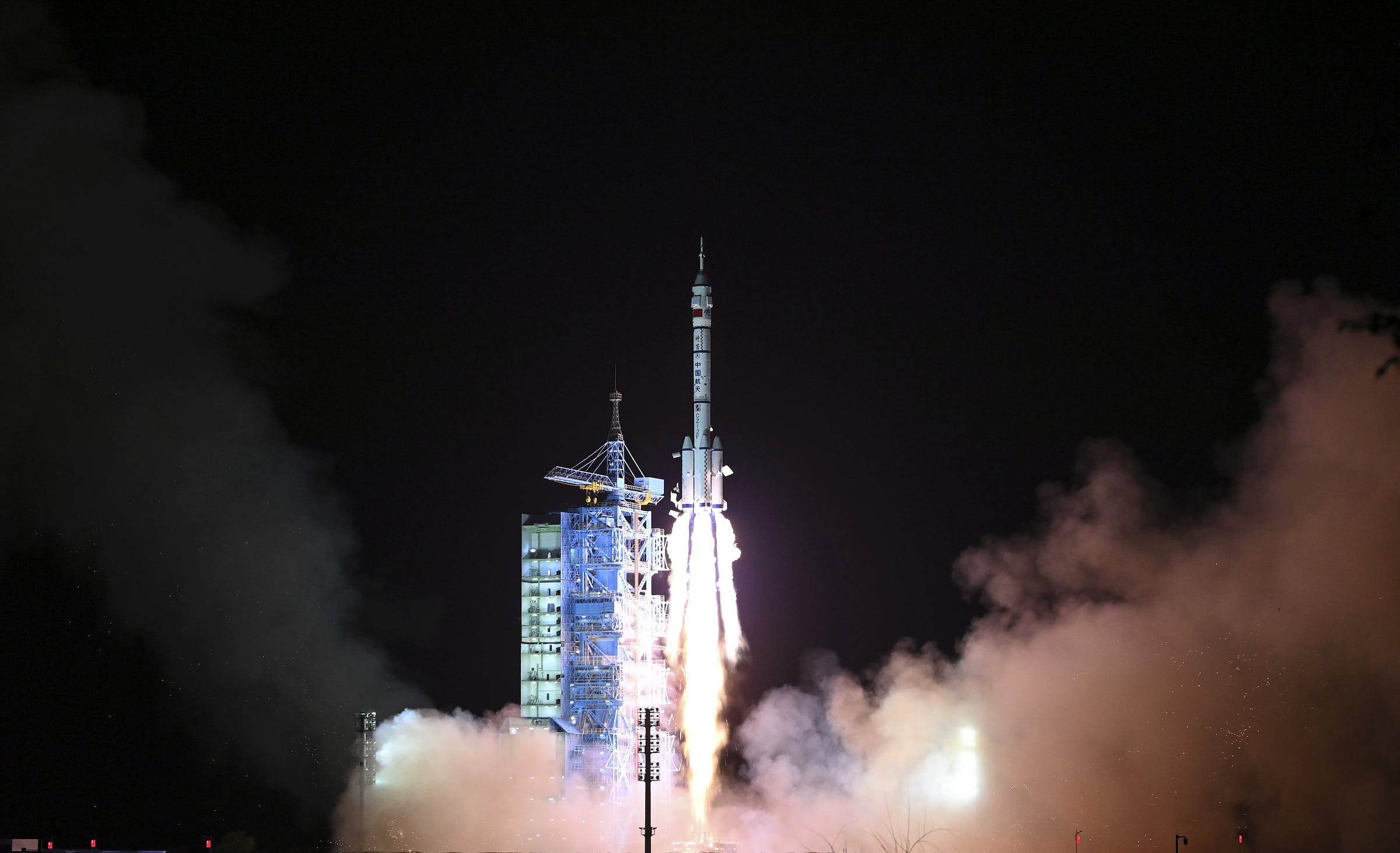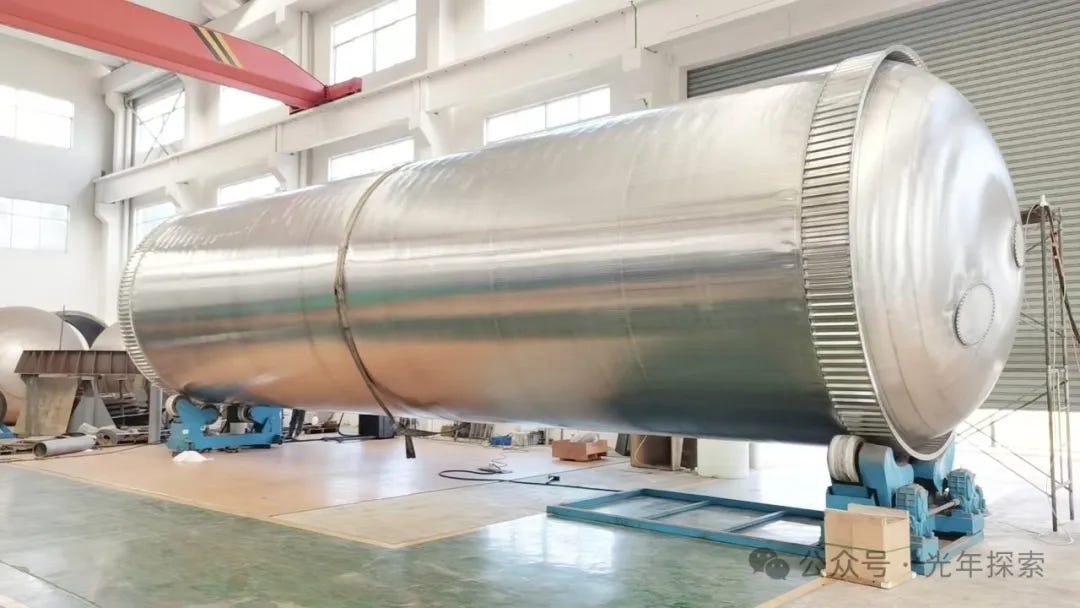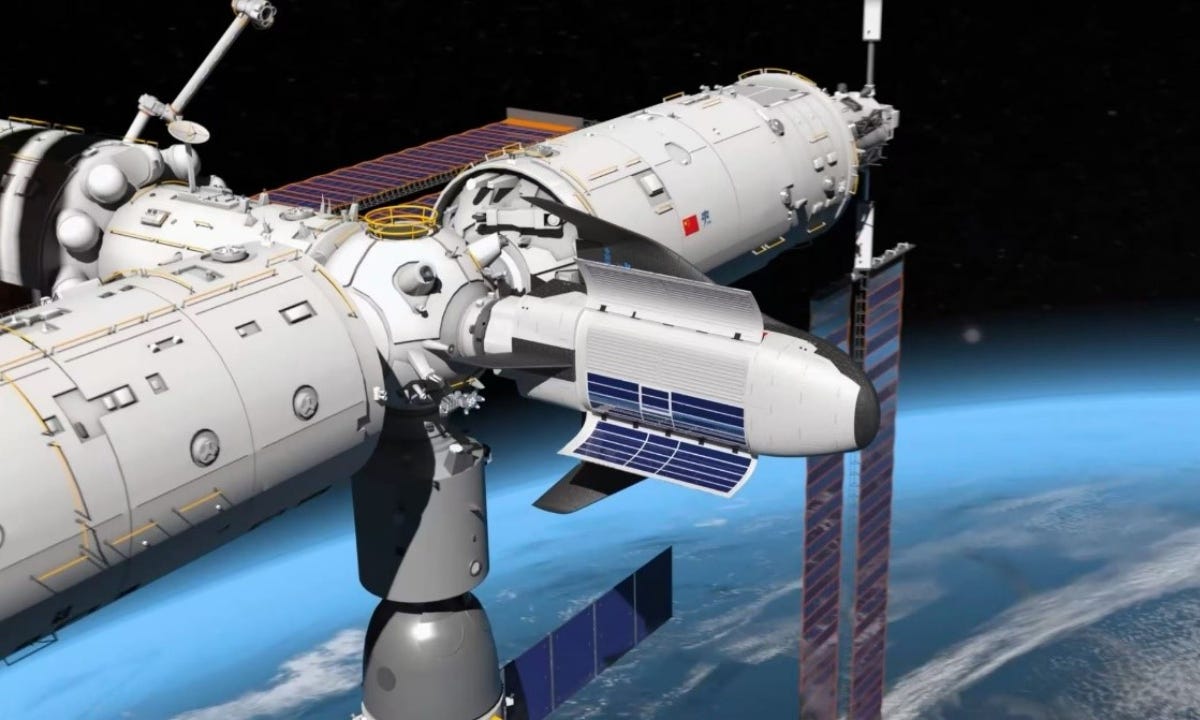Shenzhou-19 ends China's October launches, Cosmoleap raises 100 million Yuan
China has sent three more taikonauts to its space station, Cosmoleap has raised 100 million Yuan, among many more announcements
With the launch of Shenzhou-19, China’s space sector has wrapped up its October in 2024. However, the sector is starting off November strong with Cosmoleap completing its first funding round, Light Year Exploration completing its largest tank to date, China Manned Space Agency awarding two cargo spacecraft contracts, and preparations for the end of the Shenzhou-18 mission.
Shenzhou-19 crew board Tiangong
Ending China’s launches in October was the launch of the Shenzhou-19 mission with taikonauts Cai Xuzhe (蔡旭哲), Wang Haoze (王浩泽), and Song Lingdong (宋令东), atop of a Long March 2F/G. Liftoff of this mission occurred at 04:27 am China Standard Time on October 29th, or 20:47 pm Universal Coordinated Time on October 30th.
Once in orbit, the Shenzhou-19 spacecraft began chasing down the Tiangong Space Station, with a docking occurring at a reported 11:00 am China Standard Time, or 03:00 am Universal Coordinated Time, at the Tianhe modules forward docking port. The crew entered the Tianhe module a few hours after the docking once leak checks were complete.
Greeting the crew inside the module were the outgoing Shenzhou-18 crew, consisting of Ye Guangfu (叶光富), Li Cong (李聪), and Li Guangsu (李广苏). While the outgoing crew is still onboard the station, the Shenzhou-19 crew will adjust to the microgravity environment and begin taking over their various tasks.
As mentioned earlier, the crew of the Shenzhou-19 mission consists of commander Cai Xuzhe (蔡旭哲), science operator Wang Haoze (王浩泽), and operator Song Lingdong (宋令东). Cai is flying for the second time while Wang and Song are flying for the first time. The following brief introductions are from my work for Cosmic Nxws.
Cai Xuzhe is from Shenzhou, in Hebei province, and has served in the People's Liberation Army Air Force. In 2010 he was selected as part of the second group of taikonauts. After the Shenzhou-14 mission, Cai was awarded the honorary title of "Heroic Astronaut" in March 2023.
Wang Haoze is from Chengde, in Hebei province, and was previously a senior engineer at the Academy of Aerospace Propulsion Technology under the China Aerospace Science and Technology Corporation. During her time working as a propulsion engineer, she notably co-authored a paper about nuclear thermal rocket engines.
Song Lingdong is from Caoxian county, in Shandong Province, and has served in the People's Liberation Army Air Force. Having joined the PLAAF in 2008, Song went on to earn the rank of Lieutenant Colonel along with flying Sukhoi Su-27 and Su-35 aircraft for international joint exercises.
The Xinhua News Agency has released short profiles on each of the taikonauts, with some excerpts from these below.
Xinhua writes the following about Cai Xuzhe:
Cai was fascinated with airplanes as a child. Every time he heard a plane flying past, he would rush outside and stare up at the sky as it flew away and disappeared. — In 2003, China's first manned spaceflight, the Shenzhou-5 mission, was a resounding success. Sitting in front of the television, Cai was deeply attracted by the career of astronaut. As soon as he learned that the country was selecting the second batch of astronauts, Cai submitted application and was successfully recruited in May 2010. — In his spare time in space (during Shenzhou-14), Cai was fond of overlooking at Earth through the porthole, especially when the space station flew over his hometown.
Xinhua highlights the following information about Wang Haoze:
After graduating with a master's degree, Wang joined the Academy of Aerospace Propulsion Technology under the China Aerospace Science and Technology Corporation, and started her career by engaging in rocket engine research. — She later signed up for the selection process to determine the country's third batch of astronauts, and was finally selected as the only woman in this batch. — Wang had her own style of self-motivation during training, writing a summary after each major training project as both a record of her experience and a confidence booster. "Ranging from scorching sunlight to chilling rain, I experienced the extreme temperature fluctuations of the desert, which could vary by tens of degrees Celsius. Yet, I also cherished romantic moments spent lying on umbrella fabric, watching the sparkling galaxy above," she wrote after a 48-hour survival training exercise in the desert. — "From rocket engine designer to space engineer, my identity has changed, yet my unwavering commitment to serving my country through space exploration remains the same," Wang concluded.
The following is noted by Xinhua regarding Song Lingdong:
Now a 34-year-old, he is one of three crew members aboard the Shenzhou-19 spaceship, making him the youngest astronaut in the group. He is also the first male astronaut born in the 1990s to participate in China's spaceflight missions. — Having struggled with motion sickness since childhood, he experienced a strong physical reaction when he first began training on the rotating chair. "I'm going to train anyway, and do it with a smile and enjoy the ride," he said to himself. — "As an astronaut born in the 1990s, I feel deeply honored and proud to have the opportunity to serve my country and carry out the Shenzhou-19 mission. All of this is thanks to our great motherland, the efforts of generations of predecessors in the space industry, and most of all, this great new era," he said.
As mentioned at the beginning of this section, Shenzhou-19 was China’s final launch for October bringing the total for the month up to 6, and the overall total this year to 52. The previous launches in October were a Long March 3B/E from Xichang, a Long March 6A from Taiyuan, a Long March 4B from Jiuquan, a Long March 6 from Taiyuan, and a Long March 2C from Xichang.
Cosmoleap raises 100 million Yuan
Cosmoleap (大航跃迁), full business name Beijing Dahang Yuejian Aerospace Science and Technology Co. (北京大航跃迁航天科技有限公司), announced on November 1st that it had completed its first funding round with 100 million Yuan, equivalent to 14 million United States Dollars, in investment. The investors behind this funding round are stated as being Shneng Chengyi (申能诚毅), Tianchuang Capital (天创资本), Boyan Fund (柏彦基金), Xianfeng Changqing (险峰长青), and the individual Zhang Chao (张超先生).
With this new funding, Cosmoleap says that it will develop its flight computer, recovery tower computer, the launch vehicle recovery tower, and its reusable launch vehicle. The company also said that it has already assembled a group of highly educated people to develop the necessary technologies. Some development is also stated as being completed, with no emphasis on what.
Statements from the investors were also shared by Cosmoleap, with them being as follows:
Shneng Chengyi (申能诚毅):
”As a new generation of commercial aerospace enterprise, Cosmoleap has been positioned to build large-diameter liquid rockets since its inception. It has a clear development path, an excellent team, a unique and efficient tower recovery plan, and rich engineering experience accumulation to pave the way for development. As a demonstration platform for Shanghai's state-owned innovative investment, our team is optimistic about its potential in the domestic commercial aerospace development cycle and looks forward to its common development with Shanghai's commercial aerospace industry chain.“
Tianchuang Capital (天创资本):
”2023 is an inflection point for commercial aerospace. The large-scale constellation plan clarifies the launch requirements for commercial aerospace, and all rocket companies are back on the same starting line. After 2015-2023, China's liquid rocket industry has seen a supply chain boom. What China needs to narrow the gap with SpaceX is not China's Musk or China's SpaceX, but the power of the entire industrial chain. Standing on the shoulders of the current Chinese rocket industry chain, we believe that Cosmoleap's focus on liquid recoverable rockets, without historical baggage, is to have the advantage of latecomer. In addition, the core of rocket recovery is the engine and control. The founding team of Cosmoleap has a background in control and is very suitable to lead a liquid recyclable rocket company.”
Boyan Fund (柏彦基金):
”With a far-reaching vision and standing at the new starting point for China's commercial spaceflight to enter the industrialized iteration, Cosmoleap is determined to push China's commercial recoverable rockets to new heights by drawing on global experience. They have gathered a rare and powerful team with rich experience in overall, power, launch, and recovery, fully relying on the industrial chain and local advantages, focusing on bold innovations in the most critical areas, and are expected to create a more competitive large-scale reusable vehicle. Boyan Fund has long been focusing on and investing in commercial spaceflight, and we will rely on the relevant industrial ecology to continue to empower the team and help Cosmoleap realize its dream.”
Xianfeng Changqing (险峰长青):
”Aerospace is an important weapon of the country, and the development of aerospace science and technology leads the scientific and technological progress of an era. As the backbone of industrial development, commercial aerospace bears the historical mission of reducing costs, increasing efficiency, and increasing volume, which is expected to explode in the next ten years. We are optimistic about the ground capture and rocket recovery technology represented by the Cosmoleap team. We will carry forward the past and open up the future, cross mountains and seas, and achieve the future!”
Zhang Chao (张超先生):
”In the Age of Discovery, humans moved from land to sea. In the great space era, human beings will move from the earth to space. I am optimistic about Cosmoleap’s rocket team, which is full of engineers and full of space dreams, and I am willing to accompany them, focusing on the recovery of rockets, focusing on space exploration, and working hard to leapfrog mankind into an interstellar species.”
If there are any problems with these translations please reach out and correct me.
Before this funding round, the company is believed to have had 5.26 million Yuan, approximately 738,500 United States Dollars, in capital. A maiden flight of Cosmoleap’s launch vehicle is also planned for 2025.
Cosmoleap’s reusable launch vehicle is believed to be as follows, based on details from company slides and a presentation at the 75th International Astronautical Congress. The reusable launch vehicle is 75 meters tall, 4 meters in diameter, and weighs no more than 500 tons at liftoff. The vehicle’s payload capacity is approximately 6,250 kilograms with booster recovery or 10,400 kilograms with the booster expended to a low Earth orbit altitude of 1000 kilometers.
Light Year Exploration completes first 3.8-meter diameter tank
Announced on October 28th, Light Year Exploration (光年探索) shared that they had completed manufacturing of a 3.8-meter diameter stainless steel launch vehicle propellant tank. The tank is stated as being 14.6 meters long, 3.8 meters in diameter, with an internal volume of 158 meters cubed, along with a wall thickness of 1.52 millimeters. In testing the tank is expected to withstand between 800 and 1300 tons of force.
The company also shared that the propellant tank will be on display at the China International Aviation and Aerospace Exhibition, in Zhuhai, running from November 12th to 17th, for attendees and potential customers to see.
Light Year Exploration was founded back in 2022 and is focused on creating propellant tank components for China's commercial rocket companies rather than opting to build an entire vehicle. Investors are hopeful about the companies abilities and potential market, having raised 10 million Yuan, 1.4 million United States Dollars, back in April.
CMSA awards cargo spacecraft contracts
Revealed prior to the launch of the Shenzhou-19 mission, the China Manned Space Agency revealed its two choices to develop new cargo transportation spacecraft to help serve operations onboard the Tiangong Space Station.
The first of the two spacecraft is the Haolong (昊龙) cargo spaceplane under development by Chengdu Aircraft Design and Research Institute, which are under the Aviation Industry Corporation of China.
The design of the spaceplane has the wings in a fixed position throughout flight with its solar panels and radiators protected by two deployable ‘doors’. A cargo carrying capacity was not shared, but a model of the spaceplane along with its developer is expected to be at the China International Aviation and Aerospace Exhibition, possibly with more information. It is also unknown if the spaceplane will be inside of a fairing during launch.
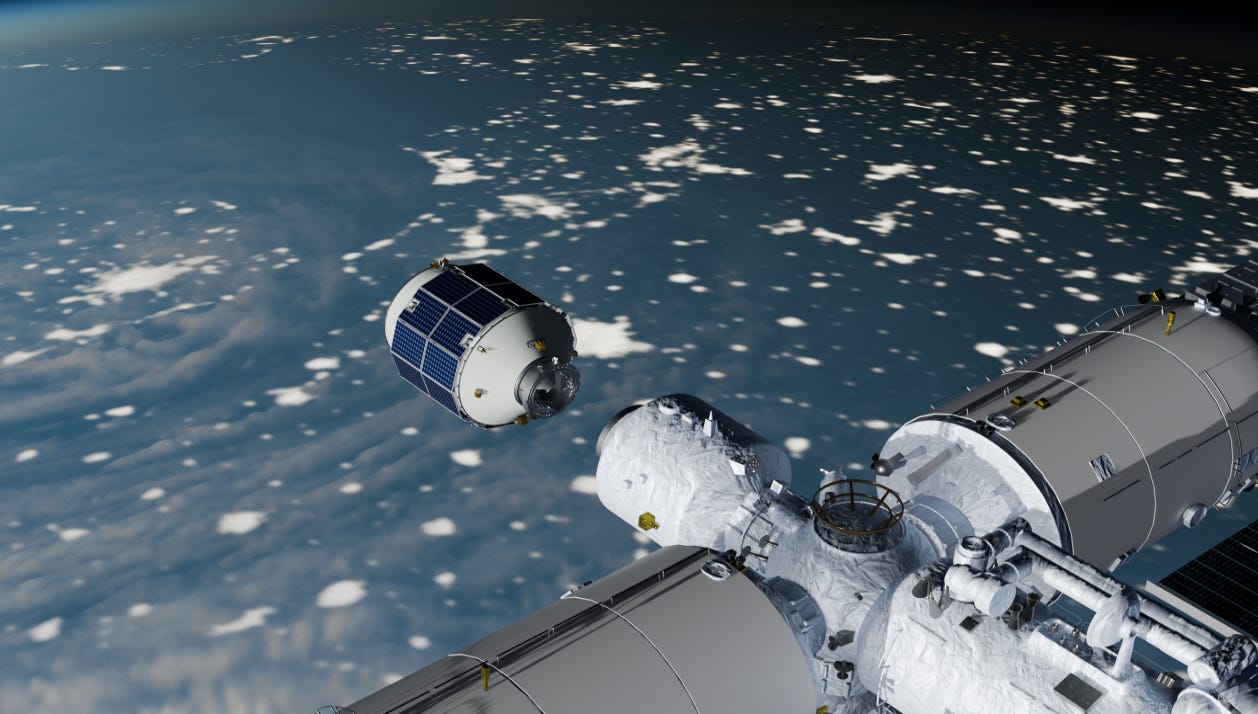
The other spacecraft selected is the Qingzhou (轻舟) cargo spacecraft developed by the Innovation Academy for Microsatellites of the Chinese Academy of Sciences. Qingzhou is a more conventional cargo delivery spacecraft, most similar to Northrop Grumman’s Cygnus spacecraft. The spacecraft is believed to have a payload capacity of 2,750 kilograms to the space station and 2,900 kilograms for disposal in the atmosphere.
CAS Space is also believed to be the launch provider for the Qingzhou cargo spacecraft, using its Kinetica-2 launch vehicle. Kinetica-2 is planned to have a low Earth orbit carrying capacity of 12,000 kilograms.
Back in September of 2023, SpaceNews reported that for cargo contracts to the Tianong Space Station participants needed to be capable of delivering more than 1,800 kilograms of cargo, while being able to dispose of or return 2,000 kilograms. Each proposal also needed to offer a price of less than 120 million Yuan, or 13 million United States Dollars.
Shenzhou-18 crew to return on November 4th
Announced by the China Manned Space Agency on October 29th, the Shenzhou-18 mission is expected to come to a close on November 4th when the spacecraft touches down at the Dongfeng landing site, in the Inner Mongolia Autonomous Region. Ye Guangfu (叶光富), Li Cong (李聪), and Li Guangsu (李广苏) have been onboard the Tiangong Space Station for the mission since launching in April, a little over six months ago.
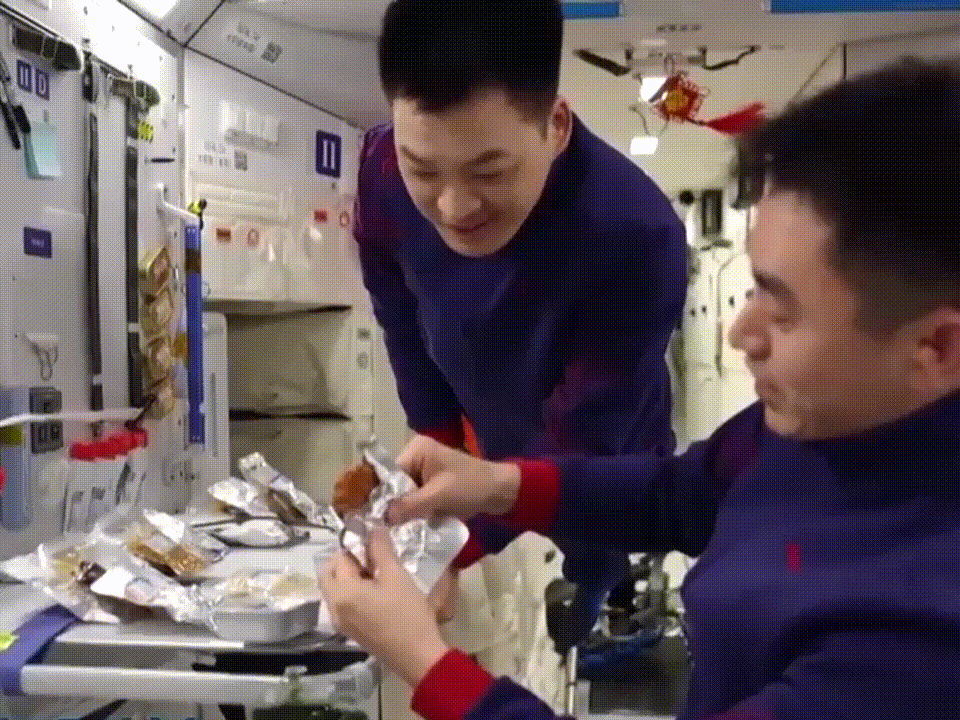
During their six-month mission, the three crew members conducted two spacewalks to perform maintenance and install hardware, along with various science experiments in the fields of microgravity fluid physics, combustion science, and materials science.
Some non-human travelers were also participating in the Shenzhou-18 mission, with them being a group of Zebrafish. According to CGTN, the crew observed that the fish had abnormal directional behaviors and swam upside down, as well as rotating and circling. Coming back with the crew to Earth will be water samples, fish eggs, and other specimens, along with videos of zebrafish movement in space for scientists to study.




